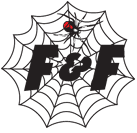F&F offers a complete protection plan against ants. Our friendly technicians receive ongoing training on the latest chemical application procedures in order to provide you with the best service possible.
There are more than 10,000 ant species worldwide. All ants are members of the scientific order of insects called “Hymenoptera” which means membranous wing. The ants primary characteristics include: four membranous or transparent wings, the front two wings larger than the hind two, chewing mouthparts; complete metamorphosis, and the front region of the abdomen is often constricted, forming the body region called the petiole.
All ants are members of the scientific family of insects called Formicidae. Members of this family live in colonies with one to many queens, immatures, many sterile workers, and occasionally males. The workers are wingless and characterized by elbowed antennae and wither one or two raised bumps on the petiole.
It is believed that ants outnumber any other class of terrestrial animals.
Ants can be detrimental to human health. Their presence can pose a serious human health risk. In hospitals, health care facilities, food processing plants, food packaging, and food preparation areas of various structures their presence should not be tolerated due to the potential disease transmission capability. Pharaoh ant workers are known for foraging in hospitals.
Many ants produce a toxin secreted by glands in the head which is deposited in the bite. This substance is called formic acid.
The activities of ants become especially annoying when they interfere with one’s leisure time. The tunneling activities of certain ants also cause problems. Reports of crackling driveways when ant excavations cave in are a problem to homeowners. Ants in the home contaminate food and sometimes damage fabrics. The winged forms of ants can cause anxiety to homeowners as they are often confused with termites.
Ant Colony
All ants are social insects which live in groups or colonies. The ants within a colony are not all the same. Individual ants perform various task and no ant does everything alone. These specialized groups are called castes.
The Worker – Worker ants are sterile females and are the most numerous of the adult castes. Workers perform the great majority of tasks in the nest. A small percentage of the worker force actually gathers food. The remainder of the workers specialize in food relaying, storage, larval feeding, nest defense, nest sanitation, and nest construction.
Larvae – The Larvae are whitish grub-like creatures that are helpless and dependent entirely on workers. The workers care for them with the greatest solicitude. They feed and groom the young larvae continually.
The Queen – The queen is always the largest in an individual colony. Her initial duty is to find an appropriate nesting location. In mature colonies, virgin queens found in the nest still retain their wings. Once the queen has reared her first brood, she usually becomes an egg laying machine. The queen mates only once, but may produce offspring until she dies.
Source: Handbook of Pest Control

